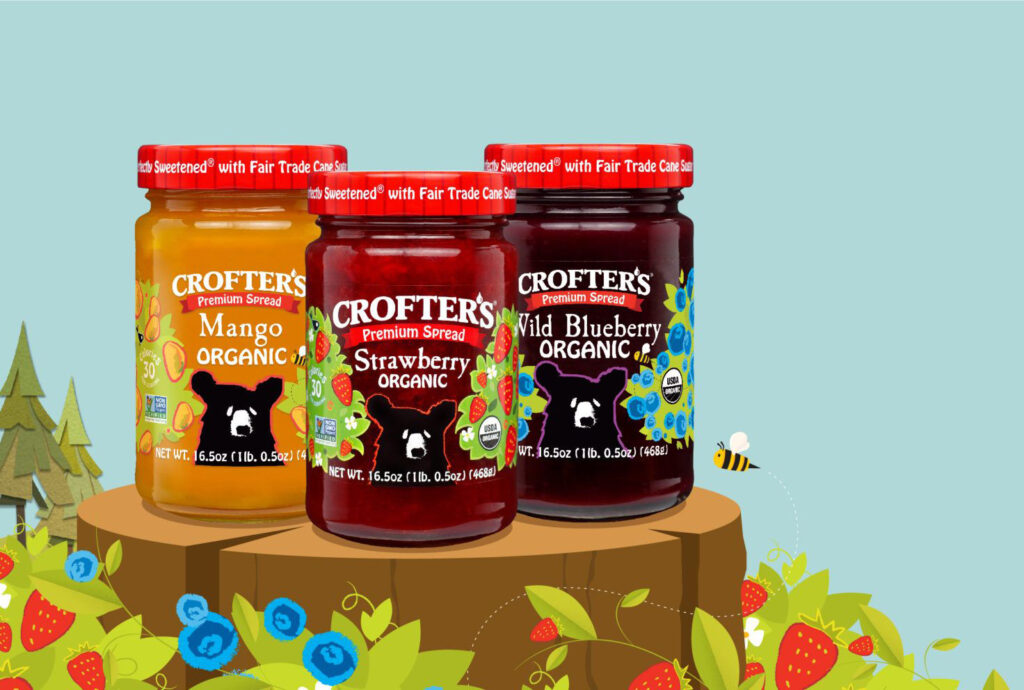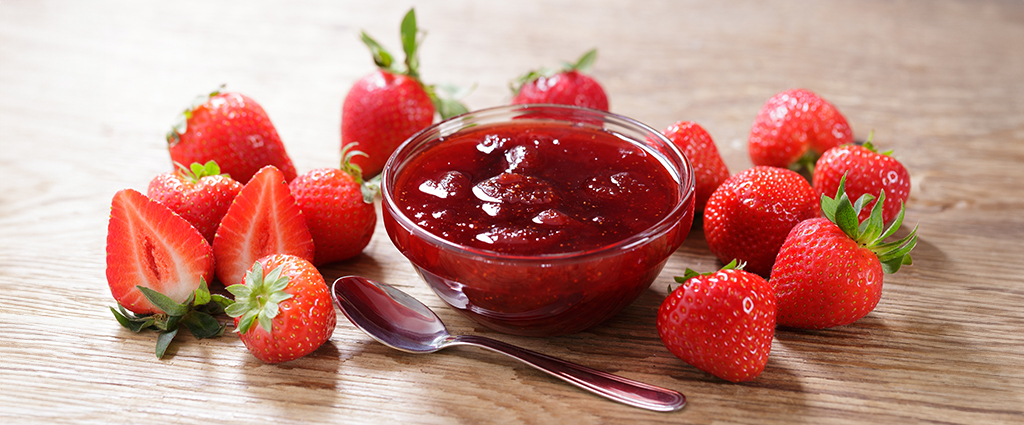Sponsored by Crofter’s Organic Fruit Spreads
Who doesn’t love the gooey deliciousness of fruits in a jar? But, far too often, jam aisle shelves are overflowing with a confusing array of options. Should you go for a preserve? Or are jellies better? What about spreads? To empower you on your next grocery run, let’s unpack what sets them apart.
Jam
Jam, the ultimate scone accompaniment, is made from whole or cut fruits. The fruit is cooked with sugar to produce a thick, fruity pulp that is easily spreadable on baked treats of your choice. Per FDA regulations, jam must be made using a single fruit and contain at least 45 percent fruit and 55 percent sugar. The high sugar content makes jam perfect as a base for tarts like Bakewell; as a glaze for pork or chicken; or as a topping for yogurt, scones, muffins, crepes, and toast.
Jelly
A classic PB&J sandwich is incomplete without jelly. This smooth, shiny, and incredibly sweet concoction is made from the juice of a fruit. Preparation includes cooking and straining fruit overnight to collect the juice, which is then mixed with sugar to produce bright, clear jelly. Thanks to its firm finish, the jelly holds its shape when you scoop it out from the jar. However, be sure to enjoy jelly in moderation as it contains at least 65 percent sugar.
Fruit spread
Fruits spread is the healthier, more nutritious, and versatile upgrade to a traditional jam. Made with less than 55 percent sugar, fruit spreads are packed to the brim with tasty, juicy fruit so that you can enjoy the sweet deliciousness without the sugar rush (yes, please!). Make your mornings fruitier with craveable Crofter’s Organic spreads. Add to your overnight oats, iced beverages, smoothies, muffins, pancakes, and dressings—or eat it right off the spoon!

The berry best choice
Crofter’s Organic spreads contain 33 percent less sugar than a preserve, and they’re always organic.
Fruit butter
As the name suggests, fruit butter is the smoother, creamier cousin in the spreadable fruit family. It is made by slow cooking fruit pulp with sweetener, spices, and lemon juice or apple cider vinegar until the mixture turns thick and opaque. While it contains less sugar than jams and jellies, it is not as versatile as a fruit spread since only a handful of fruits can be used to make fruit butter.
Marmalade
Marmalade is usually made from vibrant Seville oranges and includes the peel, giving it a thick, chewy texture. To balance out the bitterness of Seville oranges, marmalade contains about 75 percent sweetener. Owing to its sweet, tart, and bitter flavor, marmalade is best paired with cheese and crackers or as a glaze in recipes like roast duck and sponge pudding.
Preserve
Preserves and jams are often used interchangeably. But this fruit-based preparation contains whole or large fruits and is generally chunkier than jam. Since it is not easily spreadable, a preserve works better as a baking ingredient or in a salad dressing.
By the numbers
Although exact nutrition values vary by brand, here’s a typical breakdown.
- Jelly: 13 g of sugar and 50 calories
- Fruit spread: 7 g of sugar and 30 calories
- Fruit butter: 7+ g of sugar and 30+ calories
- Marmalade: 13 g of sugar and 50 calories
- Preserve: 13 g of sugar and 50 calories



